Galleries
Web Traffic Is the New Foot Traffic: Why Galleries Are Investing Big to Chase Digital Natives
In the face of dwindling foot traffic and rising fair costs, galleries are devoting more and more resources to their digital presence.
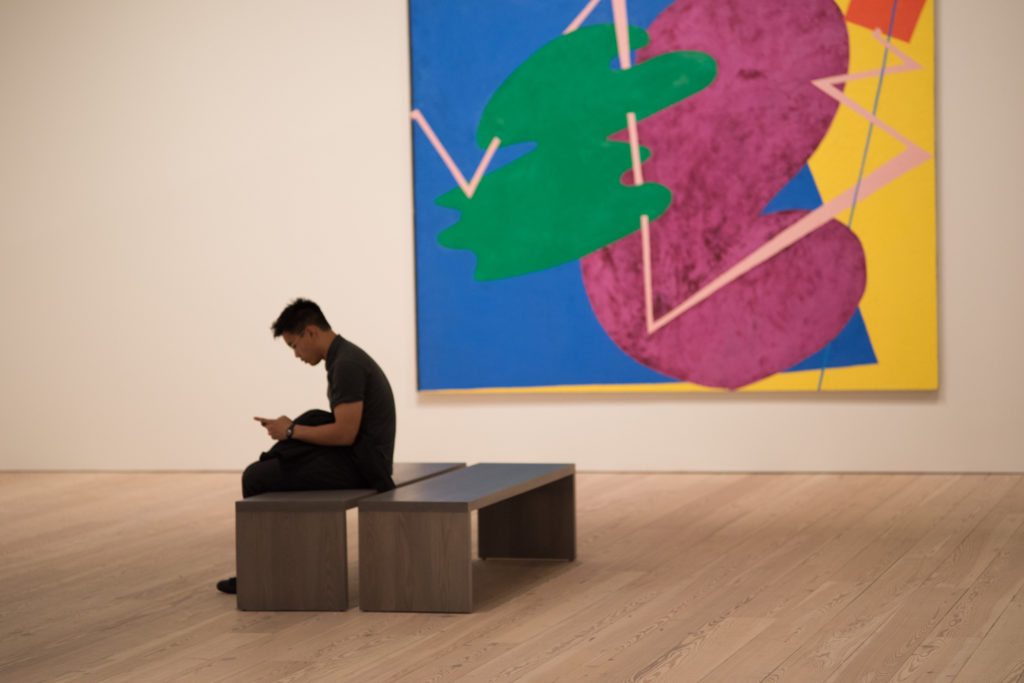
In the face of dwindling foot traffic and rising fair costs, galleries are devoting more and more resources to their digital presence.

Is a gallery’s homepage more important than its storefront?
As foot traffic to brick-and-mortar spaces dwindles, a growing number of dealers are hiring experts to overhaul their websites and social media accounts. Some are now even monitoring web traffic as carefully as online publications do.
While dealers say the majority of sales are still consummated in person, often in the framework of long-term relationships, the seeds of those relationships are increasingly being sown online, rather than through traditional routes like art fairs and referrals. The stakes are high: Galleries’ long-term survival may ultimately depend on building up a robust digital presence.
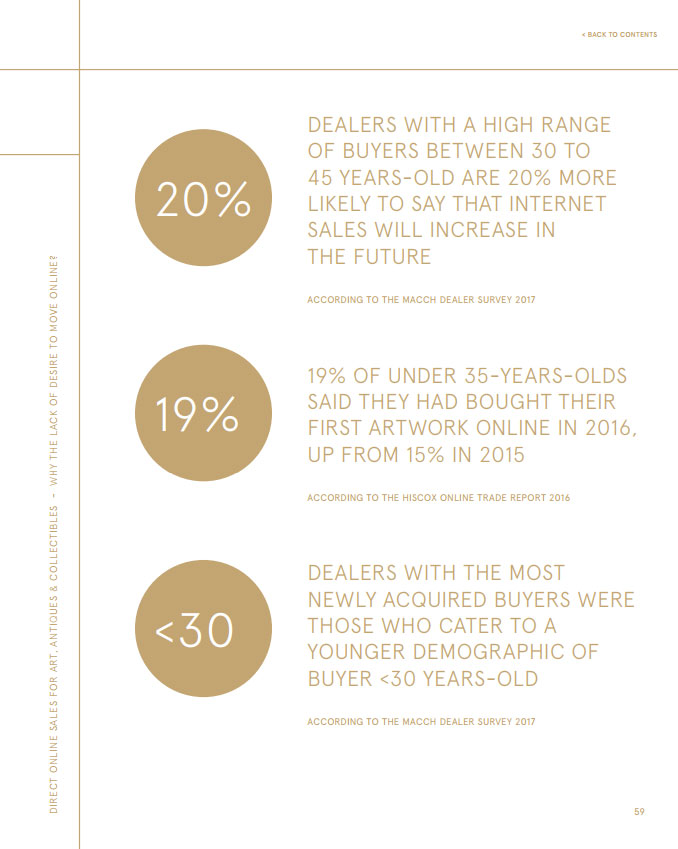
A page from TEFAF’s “Online Focus” section of its 2017 “Art Market Report.” Courtesy of TEFAF.
According to available data, online art-buying is still relatively modest: recent reports estimate that it could make up anywhere from 3.8 percent to nine percent of total sales worldwide. But for galleries, which have been slower than other businesses to adapt to the digital revolution, the web has already emerged as an essential tool for another purpose.
According to TEFAF’s 2017 art market report, the internet is the second most fruitful platform for meeting new clients. (Art fairs, unsurprisingly, are the first.) Half of the dealers surveyed say they meet 20–40 percent of their new buyers on the web. And more than two-thirds anticipate that the internet will become increasingly important as a way to meet clients in the future.
A brief survey of New York galleries conducted for this article reveals similar trends. Downtown dealer James Fuentes estimates that while 80–90 percent of sales happen in person, the vast majority of those buyers initially come through email or social media. Magda Sawon, co-founder of Postmasters Gallery, says that only 25–30 percent of Postmasters’s sales are done in-person, meaning the collector actually comes to see the artwork in the gallery. The rest, she says, comes from a “combination of direct outreach, digital selling platforms, promotion via social media, and press coverage.”
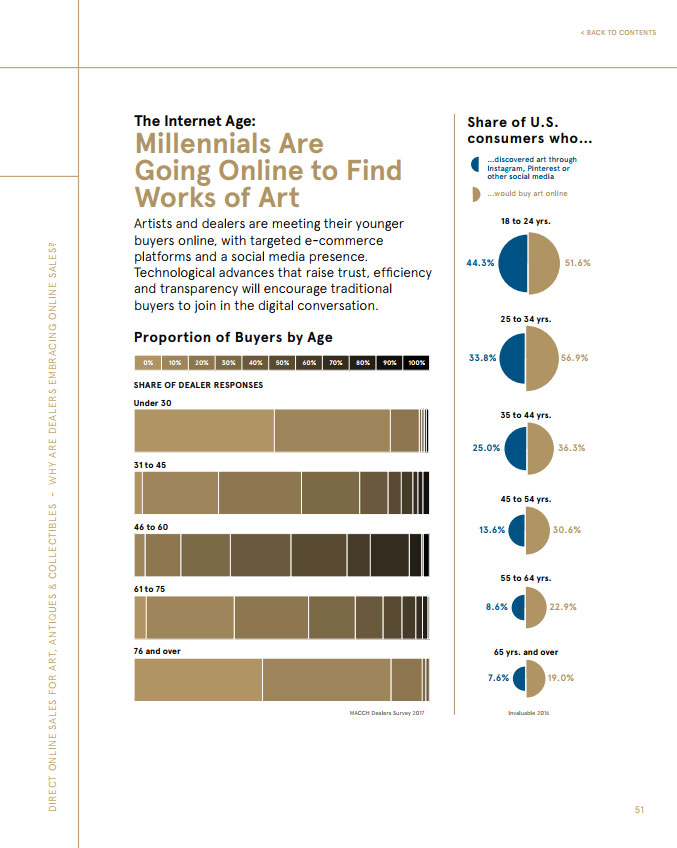
A page from TEFAF’s “Online Focus” section of its 2017 “Art Market Report.” Courtesy of TEFAF.
The New York-based dealer Sean Kelly says that the “bulk” of his gallery’s sales are done in-person, but that the ways in which those sales are initiated are changing. He notes that the number of instances in which he sells art to people who are reaching out through digital channels is growing “at quite a rapid clip.”
“The numbers have not shifted profoundly, but the rate at which those inquiries are coming in is more noticeable than a year ago, or even half a year ago,” Kelly explains.
Six months ago, Kelly brought in a new communications manager, Adair Lentini, for her advertising knowledge and social media savvy. Lentini came from Frieze magazine, where she was responsible for advertising, events, and PR for North America.
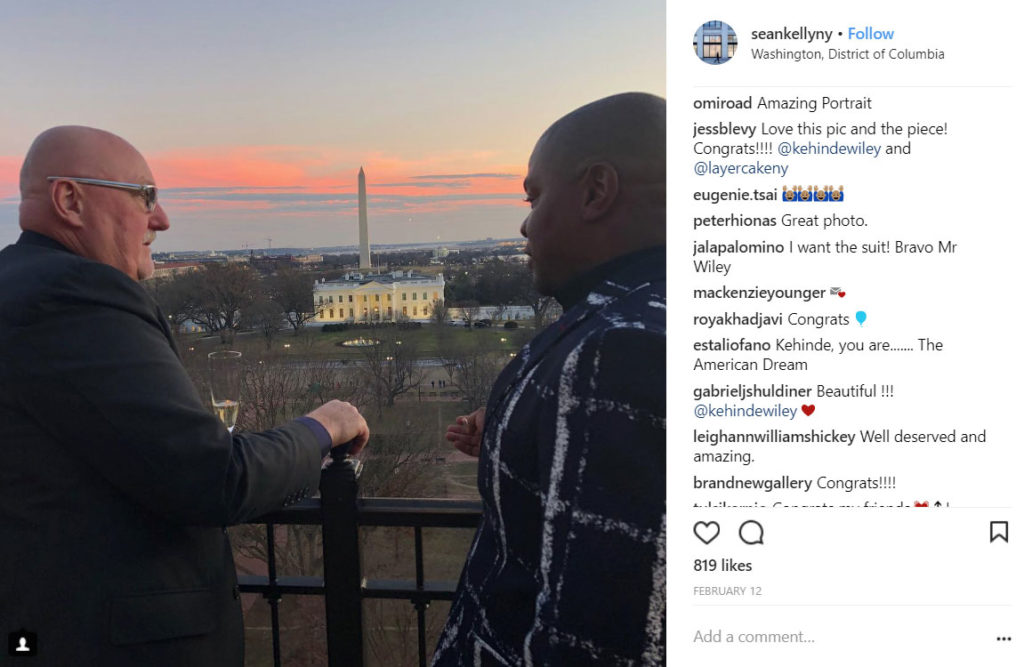
Screenshot of a recent Instagram post by Sean Kelly Gallery, featuring Kelly and artist Kehinde Wiley.
When she joined the gallery in October, she began monitoring its web analytics and implemented a number of new tactics across Kelly’s platforms. She dialed back email newsletters and increased the gallery’s Instagram presence, adding more stories, behind-the-scenes images, and even new exhibition-specific accounts.
So far, her work has paid off. Since Lentini joined Sean Kelly, the gallery has seen its online visitor numbers grow exponentially. The amount of time people spend on the website has nearly tripled, and Instagram engagement has increased by roughly 15 percent.
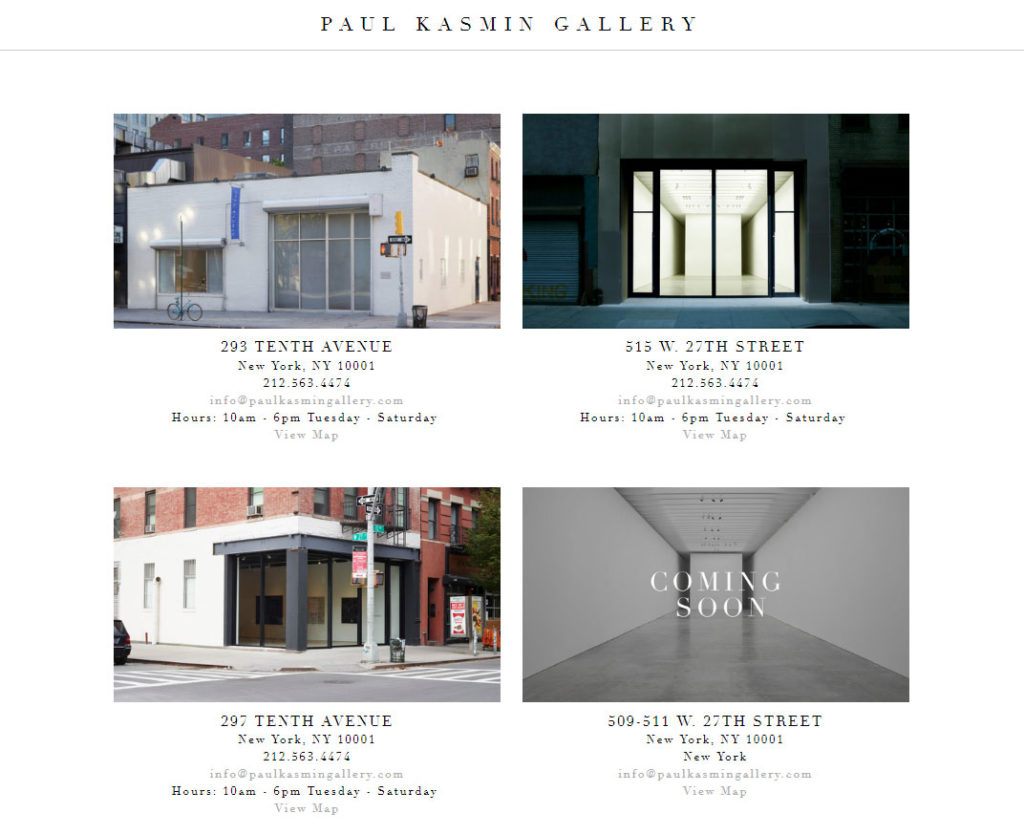
A screenshot of Paul Kasmin’s website. The gallery currently has three brick-and-mortar locations in New York, with a fourth opening soon.
Sean Kelly is not alone: Other galleries are employing similar strategies, devoting more resources to the digital realm and recruiting experts in the field. Paul Kasmin Gallery recently hired Molly Taylor as its new marketing and events director. Before she started in November of last year, the gallery didn’t even own a clicker to track foot traffic, let alone the resources to monitor web analytics.
Now, Kasmin is using a variety of new tools—Google Analytics, Artlogic, Plann—to, as Taylor puts it, “measure the details of engagement enacted across the gallery’s website, display advertising, social media, and e-newsletters.” The gallery uses this information to generate a monthly dashboard that tracks online engagement and assess what’s working and what isn’t.
Thanks to her new dashboard, Taylor can report that 60 percent of Paul Kasmin’s sales are done in person, 35 percent begin through email, four percent through their website, and one percent through social media.
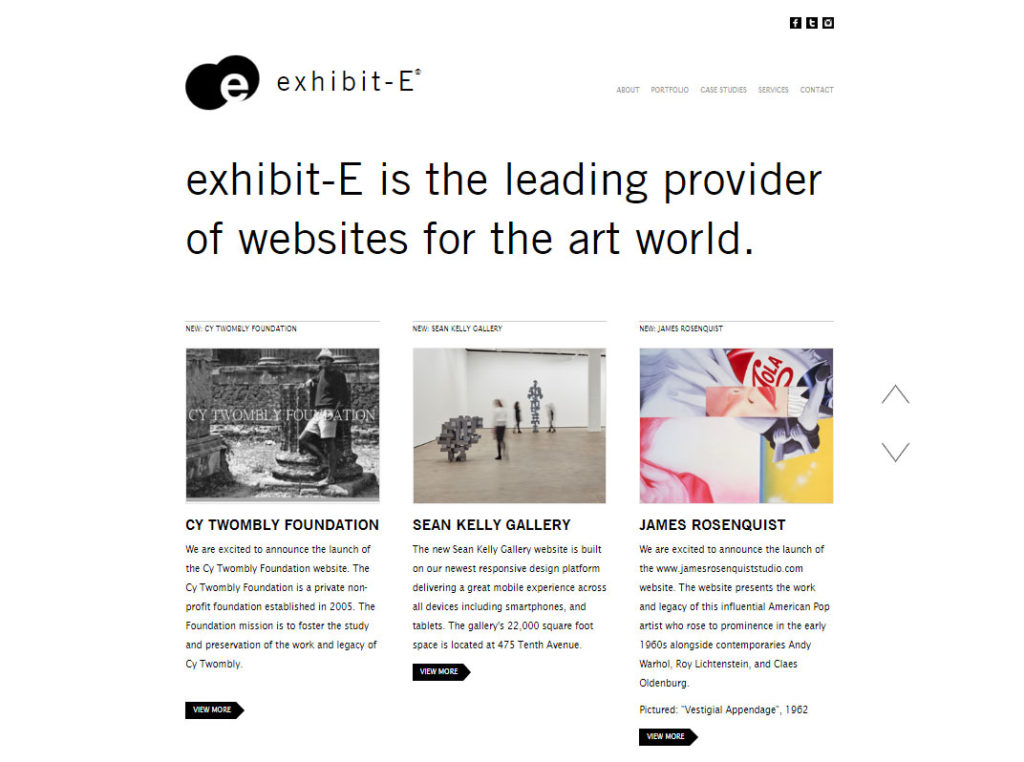
exhibit-E’s website. exhibit-E has hundred’s of art world client’s, including galleries, artists, and foundations.
Galleries’ push to make over their online storefronts has been a boon for consultants in the field, too. Dan Miller, the founder of exhibit-E, a website platform for galleries, foundations, and other organizations, says he’s seen a profound increase of interest in his business in recent years, particularly from galleries looking to integrate their website, mobile apps, and inventory information.
“It’s important to think of these platforms as tools for educating the public and nurturing and building relationships that lead to sales,” Miller explains.
Miller says galleries need to understand that websites can offer the kind of context that dealers themselves offered in person in a pre-digital era. “When potential buyers go to find information about an artist, it’s imperative that, when they land on the gallery’s website, they feel that they found all the information that they want, so that the gallery becomes the authority on that artist—more than the artist’s website or Wikipedia or other platforms.”
Miller encourages his clients to monitor web traffic, page rankings, click-throughs, and other analytics—still an unfamiliar strategy for many. “You can compare and contrast where the traffic is coming from, what devices they’re accessing it on, how much time they’re spending on it, then make changes accordingly,” Miller notes.
By implementing these practices, Miller says his clients can increase their online engagement by as much 250 percent.
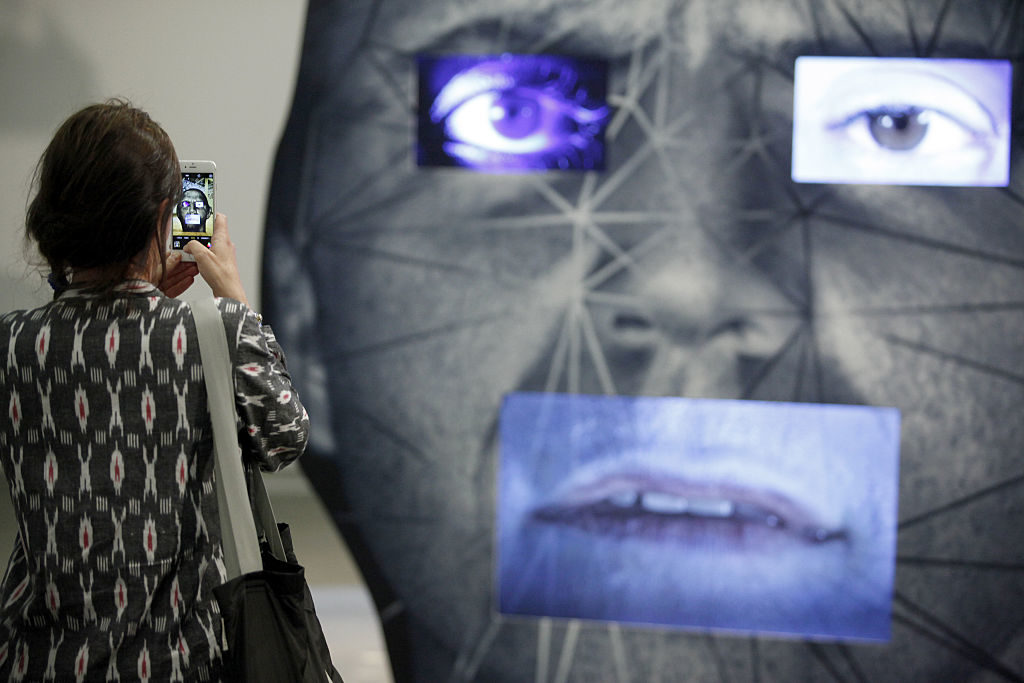
Visitors pass by the artwork of the artist Tony Oursler. Photo by Michele Tantussi/Getty Images.
For Wendy Cromwell, an independent art adviser, these strategies are part of a larger conversation about how galleries adapt to a changing business environment (or don’t, at their peril).
“You begin to recognize that the older collectors who are not so-called ‘digital natives’ are aging out the market,” Cromwell says. “It’s important to keep an open mind about how a younger generation will want to engage with art. Will it be by going to galleries, or will it be through online content and virtual experiences and art fairs? It seems to me that it’s a combination of those two already.”
Indeed, for Sean Kelly, a digital makeover is not optional. “People often ask me, ‘Why are you concerned about social media? Most collectors aren’t going to follow you on Instagram; most collectors aren’t going to be that tech-savvy,’” he says. “That might be true, but I can tell you of multiple examples in my 30-plus year history in this business where we took time with young people who may have come in with their parents or may have come in with a college or a school group, and they eventually came back to us as buyers, wanting to begin a collection.”
Slowly, dealers are recognizing that if they continue to rely on cultivating new clients only in person, the well could ultimately dry up. “I don’t think the digital is going to replace the in-person anytime soon,” Kelly concludes. “But the ways in which sales conversations are initiated—that’s where we’ll continue to see a significant difference.”